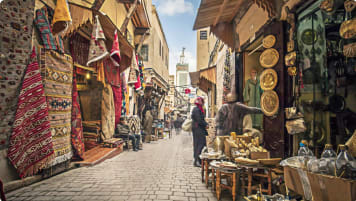Questions About Georgia: The Definitive Guide
Escorted small group tour of Georgia for senior and mature travellers. Learn about the history, the nations of the Caucasus region and visit Tbilisi.
8 Sep 19 · 2 mins read
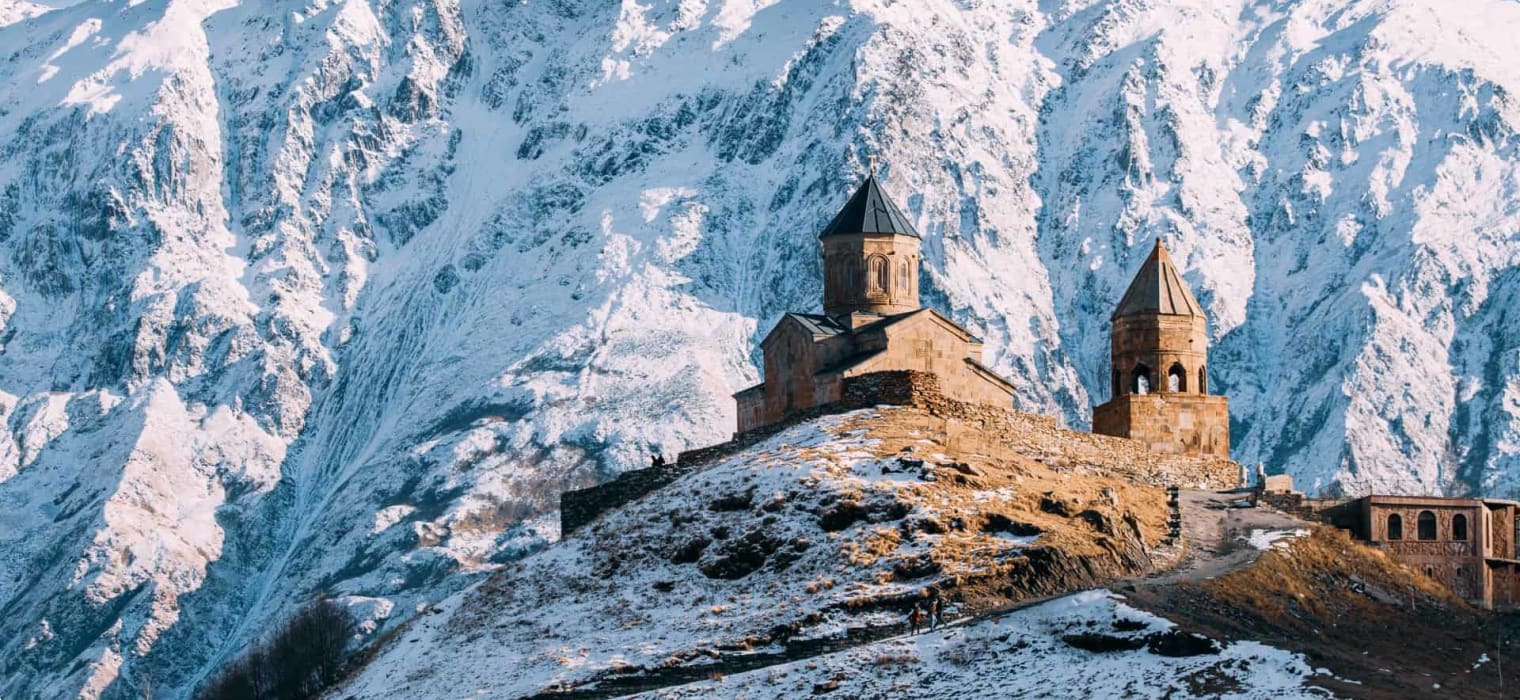
Questions About Georgia for senior travellers
Odyssey Traveller specialises in crafting unforgettable experiences for senior and mature-aged travellers who are interested in learning as a couple or as a solo traveller. Providing adventure and educational programs to escorted small group tours since 1983. Odyssey has built up a reasonable knowledge bank to answer questions about Georgia that travellers are likely to ask, as they make their plans to tour independently, or with us as part of a small group tour. We hope that this list of frequently asked questions and the answers we provide will help you with planning your next holiday.
Read on, but please do not hesitate to contact us via the website, or through email or chat if you have more questions about Georgia or our other tours.

FAQs
Where is Georgia on the map?
Georgia is located in the Caucasus, a mountainous region located between the Black Sea (to the west) and the Caspian Sea (to the east). The Caucasus is the eastern-most region of Europe, and is a region of cultural exchange between the Middle East, Central Asia, and Russia.
Georgia is bordered by Russia to the north, Azerbaijan to the east, Armenia and Turkey to the south, and the Black Sea to the west.
How did Georgia get its name?
In their native tongue, Georgians refer to themselves as the Kartveli and to their country as Sakartvelo. However, the country has long been referred to as ‘Georgia’ in English. This is because the patron saint of the Kartveli is St. George, a Roman soldier who was executed for refusing to recant his Christianity.
Historians suggest that when the crusaders came through the region in the Middle Ages, they named the country Georgia after St. George – whose depictions in the art and architecture of the region were inescapable. Others suggest that the various conquerors of Georgia – Persians and Ottomans – named the region after the patron saint of its inhabitants, Gorj and Gurju, respectively. This became Gruzia in Russian, which was then Latinised as Georgia at some point in the Late Middle Ages.
Ironically, the popularity of the name George in Europe was inspired by the crusaders visit to Georgia. Inspired by the widespread veneration of George in the East, particularly in Georgia, crusaders started naming their children George, and George became the patron saint of England in 1340.
When did Georgia become Christian?
Georgia was one of the first countries to embrace Christianity, in 337 AD. Throughout antiquity Georgia was known as the Kingdom of Iberia. Though technically independent, Iberia had in reality been under the influence of either Ancient Rome or Ancient Persia.
In AD 298 Rome signed a treaty with Persia, which recognised the Persian-born Mirian III as the king of Iveria, or Georgia. He founded the Chosroid dynasty which ruled for over two centuries. In 337, Mirian, following his wife Nana, was converted to Christianity by the holy slave Nino. Georgia became the world’s third Christian state, preceded only by Armenia (AD 301) and Ethiopia (AD 330).
Though Georgia would be ruled by a succession of Zoroastrian and Muslim leaders, the people of Georgia have remained consistently Christian. Today, the majority of Georgian Christians are part of the Georgian Orthodox Church, which is in full communion with the other churches of Orthodox Christianity.
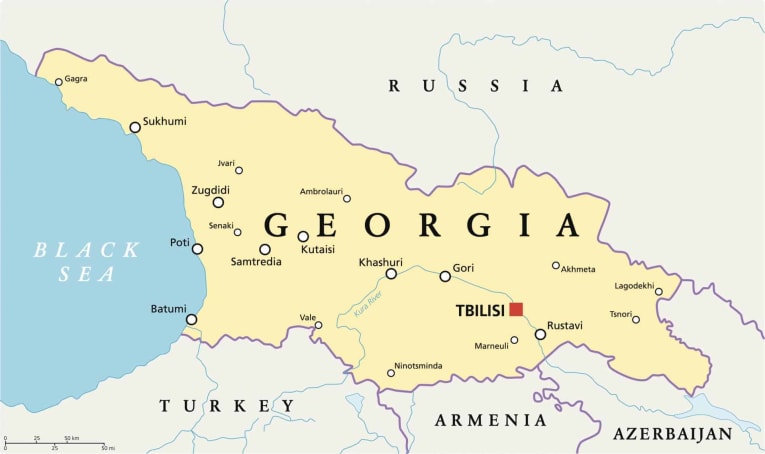

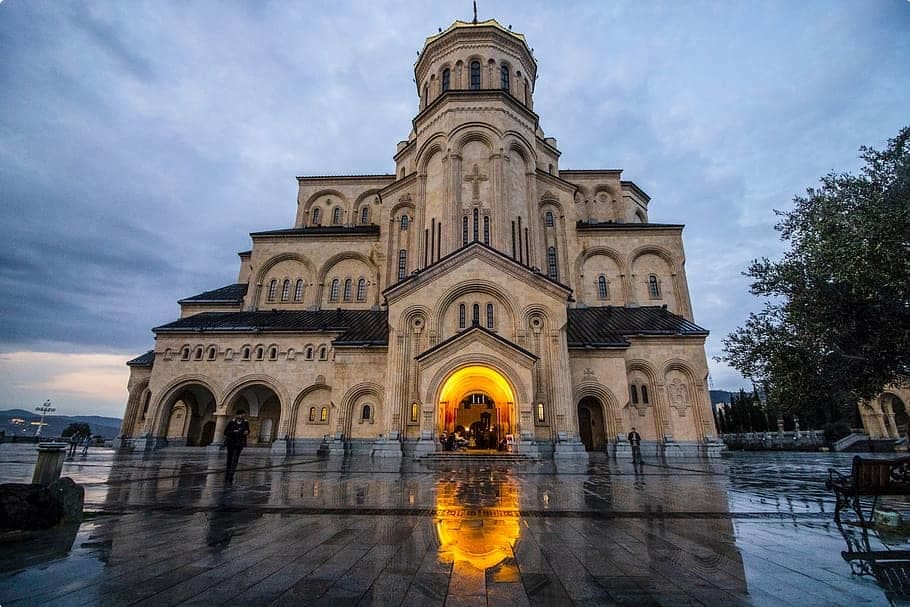 A church in Tbilisi
A church in Tbilisi
When did Georgia get independence?
Georgia has had a number of periods of independence. While the Chosroid dynasty fell in the 6th century, and Georgia fell under the influence of Persia, Byzantium, and the Arab caliphs, the country again became independent at the end of the 9th century.
The period of independence in the Middle Ages is today known as the country’s ‘golden age’. The ‘golden age’ saw the creation of important works of Georgian literature, particularly the national poem Vepkhistqaosani or ‘The Knight in the Panther Skin’, which was composed by Shota Rustaveli at the end of the 12th century. This period also saw the construction of Georgia’s greatest monasteries and churches, as Georgia became a centre of religious learning.
Under Tamar (1184-1213) the kingdom reached its greatest extent, stretching from the Black Sea to the Caspian, and from today’s Turkey to southern Russia. In a time when it was rare for women to have power, Tamar was regarded as a strong and successful ruler. Under the command of her second husband, David Soslan, Georgia’s armies took parts of Azerbaijan and defeated the Sultanate of Rum, located in current-day Turkey. She received the respect of famous rulers, including the Russian Ivan the Terrible (who claimed she was ‘endowed with the intelligence and courage of a man’) and Saladin, who immediately bowed to her request that he recover items from Georgian monasteries when he retook Jerusalem from the Crusaders in 1187.
However, the Golden Age came to an end with the Mongol invasions beginning in 1220. Georgia was divided between the Ottoman Empire and Persia for centuries. In the 19th century, Georgia came under Russian rule.
In the late 19th century, Georgia experienced a national revival. Georgian independence was briefly recognised in 1920, but in 1921 the Red Army entered Georgia and Georgia became part of the Soviet Union.
While Stalin might be the most famous Georgian in history, his home country escaped none of his repressions. Nationalism was suppressed, local members of the Communist Party were purged, and Georgian peasants suffered from the collectivisation of agriculture.
During the Soviet period, Georgia transformed from an agricultural nation to a largely urban and industrial one. Following Stalin’s death, the Soviets encouraged the Georgian language, enabling the redevelopment of a Georgian nationalism.
Georgia became independent following the dissolution of the Soviet Union in 1991.
For more on the history of Georgia, check out our article: Discovering Georgia.
What is Georgia known for?
Hospitality:
- ‘A guest is a gift from god’ goes the Georgian saying, indicating the centrality of hospitality to Georgian culture. Foreign visitors are plied with food, with the lucky invited to a supra, or feast. A traditional supra usually lasts for several hours and features an assortment of dishes accompanied with plentiful amounts on the local wine (more on that later). The supra is led by the tamada who leads the toasts, the central element of the feast. The unwritten rules of a Georgian feast provide that God, Sakartvelo (or Georgia), and the guests are always toasted. Other toasts can include the recitation of poetry, reference to ancient myth, and nostalgic toasts towards the past and those no longer with us.
Wine:
- Georgia’s history of wine making goes back over 8000 years, and Georgians claim that the region was one of the first in the world to practice wine making. Today, there are more than four hundred local varieties of wine in Georgia. Georgian wine is made using the distinctive Qvevri method, where grapes are pressed and then transferred to large clay pots, which are then sealed to ferment underground for six months.
- The second national drink is chacha, a highly alcoholic (over 40%) spirit made from grape pomace, the residue leftover after winemaking.
Languages:
- In Arabic, the Caucasus is called djabal al-alsun, or the ‘mountain of languages’. Because the high mountains made it hard for language and culture to spread, the region has the highest density of distinct languages in the world. The Caucasus is home to three indigenous language families, which have no relation to one another nor to the broader world, though several other Caucasian languages are related to the other languages of Europe and Asia.
- While Armenian is an Indo-European language and Azerbaijani related to Turkish, Georgian is the dominant language of the Kartvelian family, related only to some minority languages in the region.
- Georgian is also written in a unique curly script, not obviously related to any other alphabet. The Mkhedruli script dates from the early 10th century, and has been dominant since the 19th century.
- Georgia also has two ancient scripts, Asomtavruli and Nuskhuri, which can be seen inscribed in religious monuments and churches.
Music:
- Georgia has a beautiful and distinctive style of polyphonic singing (where multiple singers sing two or more distinct melodies), which developed several hundred years before it appeared in Western Europe in the Late Middle Ages. While styles vary from region to region, generally Georgian folk music consists of three voices: the ‘top voice’ (usually a mid tenor), the ‘middle voice’ (or low tenor) and bam (or bass). Men traditionally sing war and feasting songs, while women perform lullabies and healing songs.
- Georgian polyphony would prove influential on modern classical composers, particularly Igor Stravinsky, who described it as ‘more important than all the discoveries of new music’. In 2001 it was named part of humanity’s intangible cultural heritage by UNESCO.
- Today, Georgian folk music is preserved by the Rustavi State Academic Ensemble of Folk Song and Dance, which has performed at more than 4000 venues across the world.
Where to visit in Georgia?
Tbilisi:
- Georgia’s capital city is a charming blend of Asia and Europe. Visitors to the USSR favourably contrasted it to the rest of the country: for the writer Fitzroy Maclean, ‘it had a graceful quality, a southern charm, an air of leisure, which I had so far found nowhere else in the Soviet Union’. For Arthur Koestler, Tbilisi had ‘an irresistible charm of its own, neither European nor Asiatic, but a happy blend of the two’ (Burford, 2018).
- The Old Town is a warren of twisting alleyways and hidden courtyards climbing Mount Mtatsminda. The neighbourhood has been inhabited by Persians, Tatars, Jews and Armenians, and architecturally reflects this: mosques, synagogues, Armenian and Georgian churches and even a Catholic church all rub shoulders, while the secular architecture melds Arabic elements with Russian and art nouveau styles.
- Tbilisi gets its name from a number of warm sulphur baths (tbili is Georgian for warm). The abaonbutani are a series of underground sulphur baths emerging as domes into the outside world. Also striking are the Orbeliani baths, which are covered in blue tile in Central Asian style.
- At the top of Mount Mtatsminda is Narikala Fortress. Established in the 4th century as a Persian citadel, it was expanded by Arabs in the 7th century and then again during the Georgian ‘golden age’. Most of the current fortifications date to the 16th and 17th centuries, however.
Monasteries:
As one of the earliest Christian states, Georgia is home to several ancient monasteries. Particular highlights include:
- The Gelati Monastery
- The Gelati Monastery was founded by the ‘golden age’ King David in 1106 as a centre for Christian learning. Located on a wooden hill, the complex is home to several frescoed chapels and the tombs of many of Georgia’s rulers, including David the Builder. Particularly impressive are the frescoes in the Cathedral of the Virgin, painted in a Byzantine style with Georgian elements.
- Gergeti Trinity Church
- Located in a particularly spectacular spot is the Gergeti Trinity Church, an isolated 14th century building set against Mount Kazbek, one of the highest peaks in the Caucasus. The church’s isolated location meant that precious relics were held here during the 18th century Persian invasion
- Vardzia
- Vardzia is Georgia’s most famous cave city, associated with Queen Tamar, and central to Georgian national and spiritual identity. Tamar made it into a monastery housing around 2,000 monks, who lived in rooms carved into to a rocky cliffside. Successive earthquakes damaged the building, and today only 600 out of a total 3000 rooms survive, but monks continue to live and practise here.
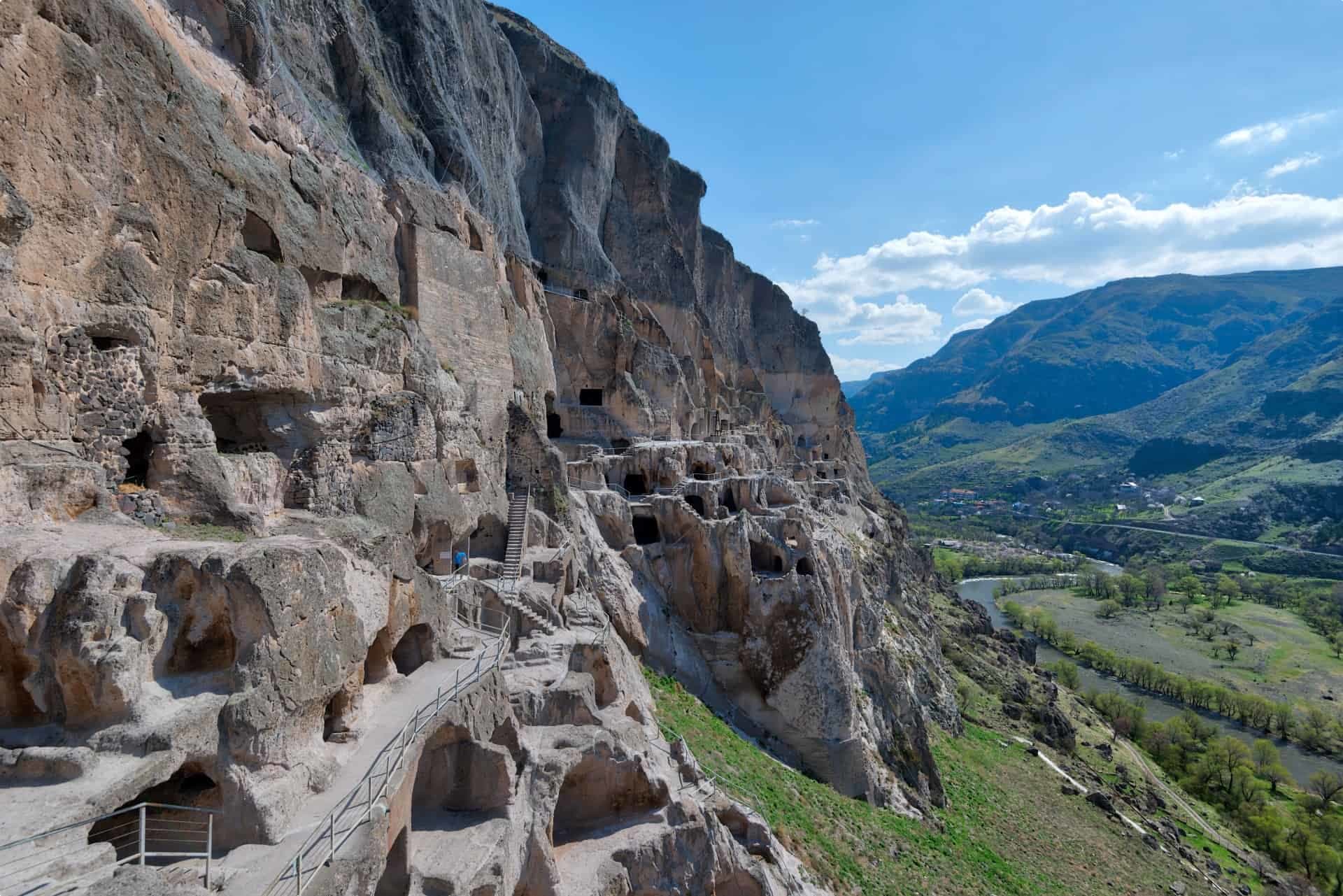 Inside the caves are some remarkable frescoes, depicting Queen Tamar along with several New Testament scenes.
Inside the caves are some remarkable frescoes, depicting Queen Tamar along with several New Testament scenes.
Scenery:
- Despite its small size, Georgia’s landscape is incredibly diverse. The Caucasus – Europe’s highest mountain range – is home to snow-capped peaks and verdant valleys. The lowlands, home to Georgia’s wine-growing regions are full of rolling hills, vineyards, dotted with wineries and the occasional ancient monastery.
- Georgia also has a significant Black Sea coastline. The major city is Batumi. An ancient trading port, Batumi became a fashionable beach resort during the Russian Empire. Since the fall of the USSR, Batumi has become a tourist hotspot. While its glitzy modern architecture divides opinion, it’s hard to deny the charm of its 19th century buildings, or the beauty of its Black Sea beaches.
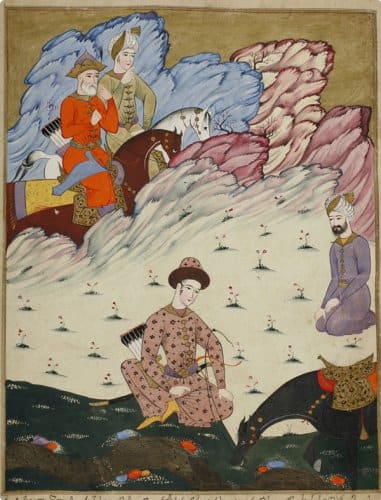
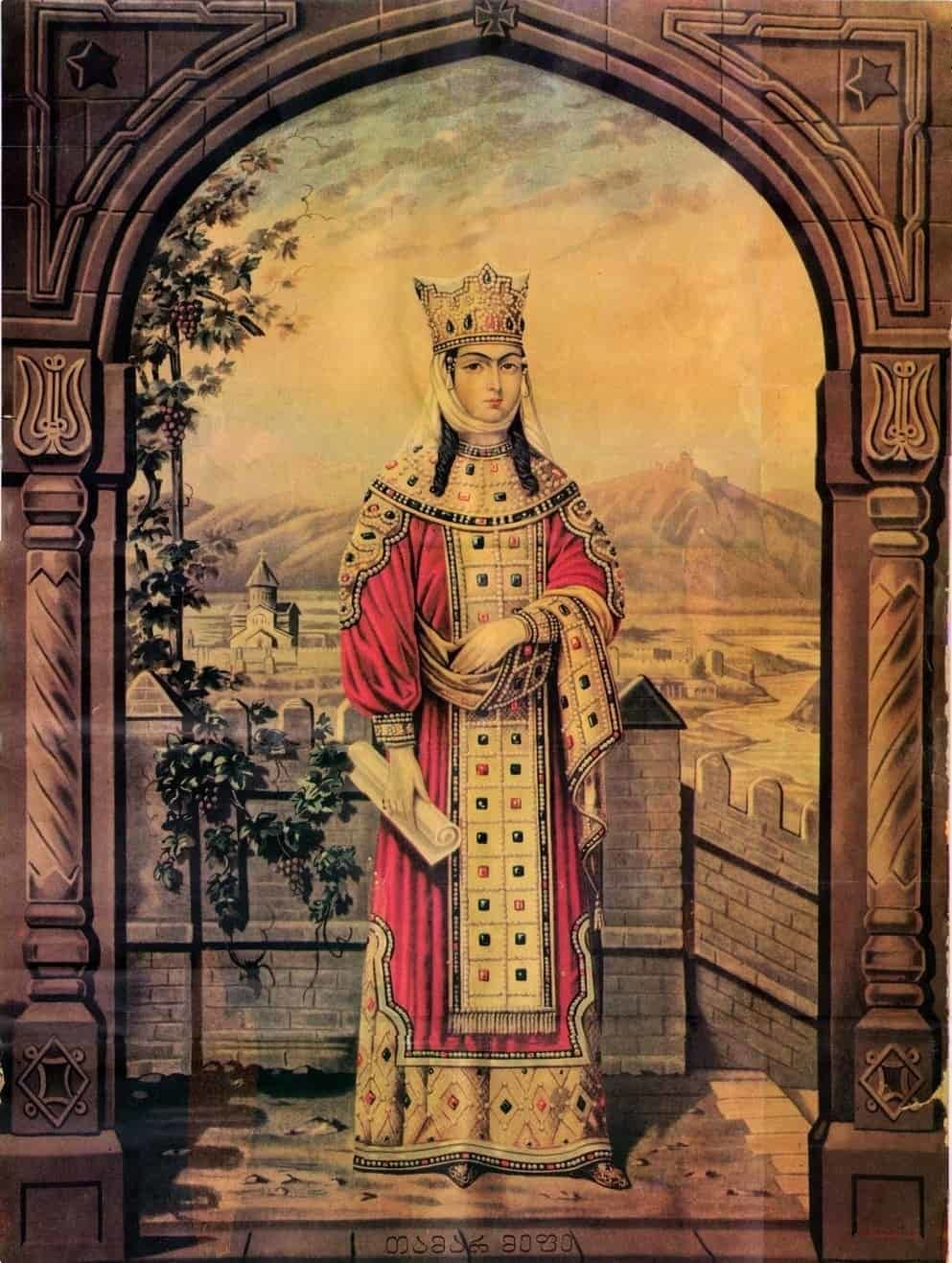


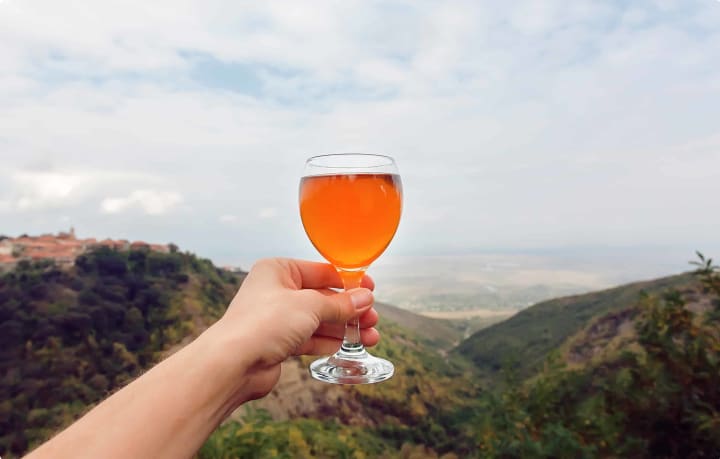
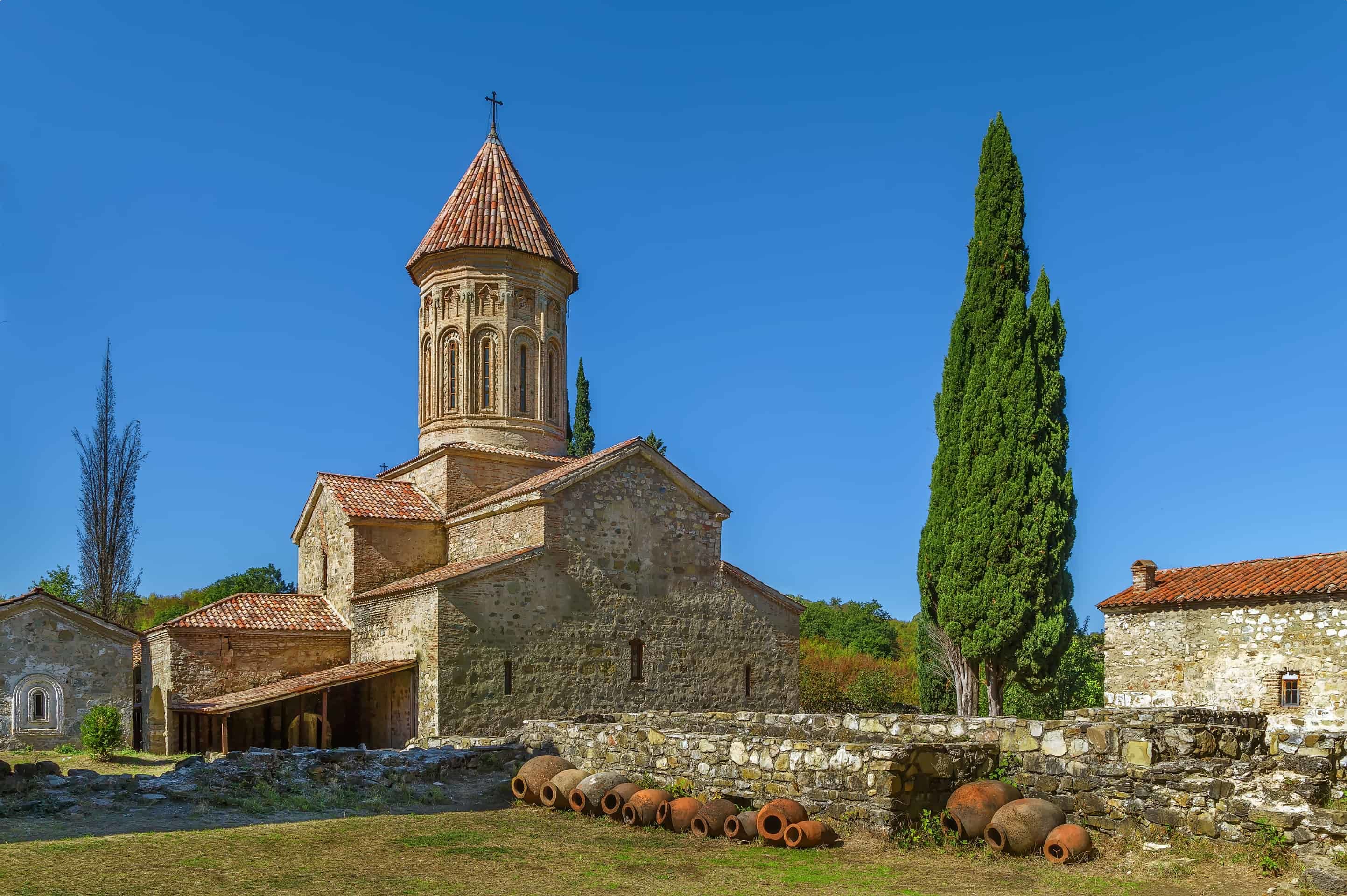
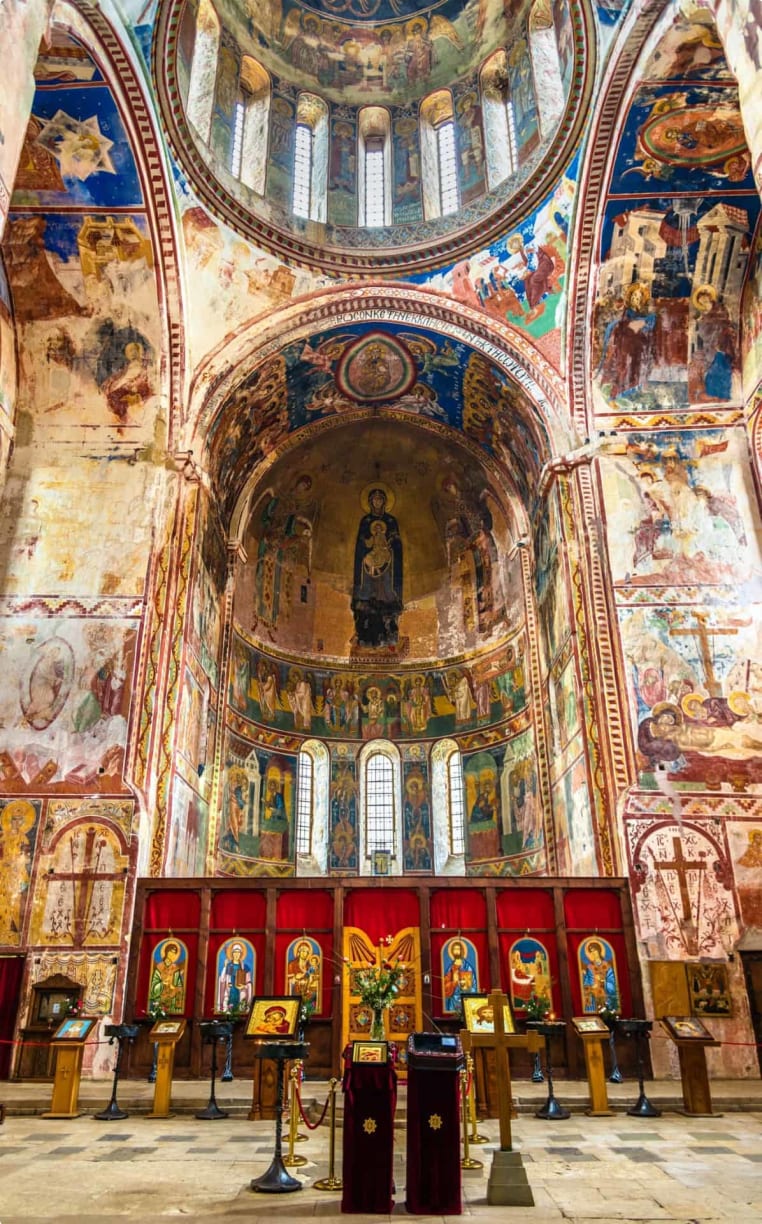

What food is Georgia known for?
Georgian cuisine is a mix of influences from Eastern Europe, the Middle East, and the Caucasus. The unofficial national food is khinkali, or soup-filled dumplings. Also iconic is khachapuri, freshly cooked bread filled with warm cheese and sometimes topped with an egg.
Main dishes include meat stews, flavoured variously with dill, tarragon, pomegranate and sour plums.
Is it safe to visit Georgia?
Absolutely! While the seceded zones of South Ossetia and Abkhazia (now ‘protected’ by Russia) are closed to tourists, the rest of Georgia is totally safe to visit. In fact, crime rates are lower here than in most of Western Europe and tourists are rare enough that the scams found elsewhere are unknown.
What is the climate like in Georgia?
For a small country, Georgia has a surprising diversity of climates. The Caucasus has an alpine climate, with chilly temperatures ranging from -4C in January to 14C in July and August, though parts get as cold as -30 in winter.
In Tbilisi, winter is warmer, but still chilly, with an average maximum temperature of around 6. Summers can be balmy, with average maximums of around 31, but are nonetheless the most popular time for visitors.
What is the best way to visit Georgia?
Residents of Australia, the European Union, the USA, Canada, New Zealand and many other countries do not require visas for visits to Georgia of up to a year.
Several airlines fly from Australia to Tbilisi, most with a stopover somewhere in the Middle East.
If you’re interested in visiting Georgia, think about joining Odyssey’s Tour of the Caucasus. Designed for active mature and senior travellers, our small group tour encompasses Georgia, along with neighbouring Azerbaijan and Armenia. In Georgia, the tour stops in Tbilisi, and visits the Varzia and Gelati monasteries among other sites. The tour also includes visits to local wine and food manufacturers.

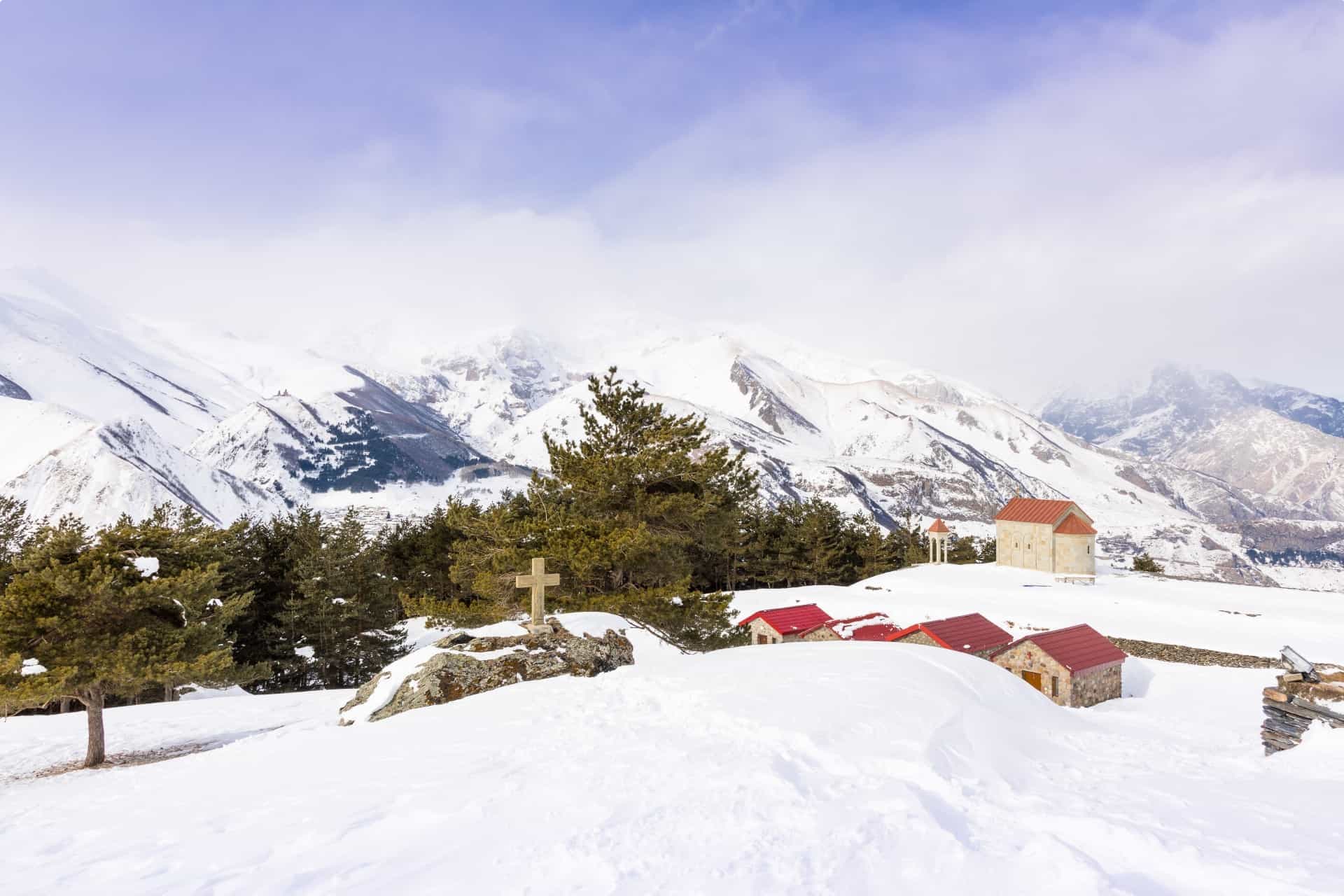
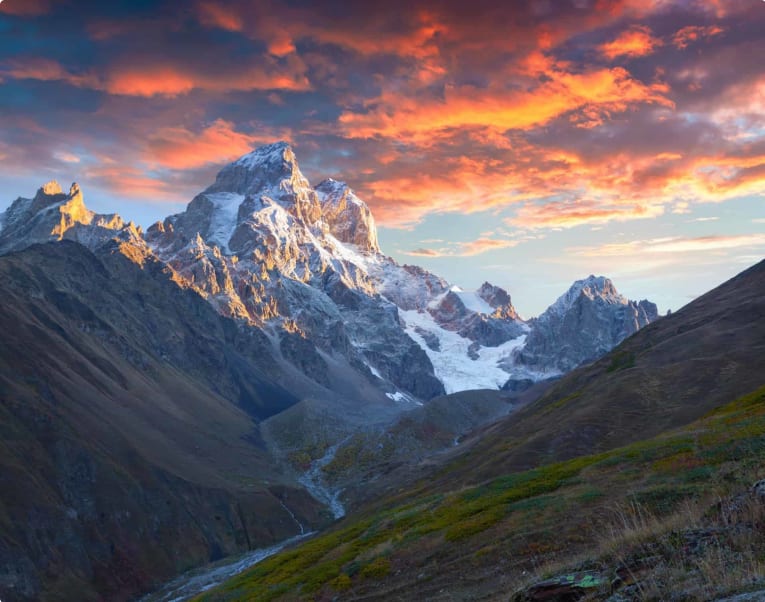
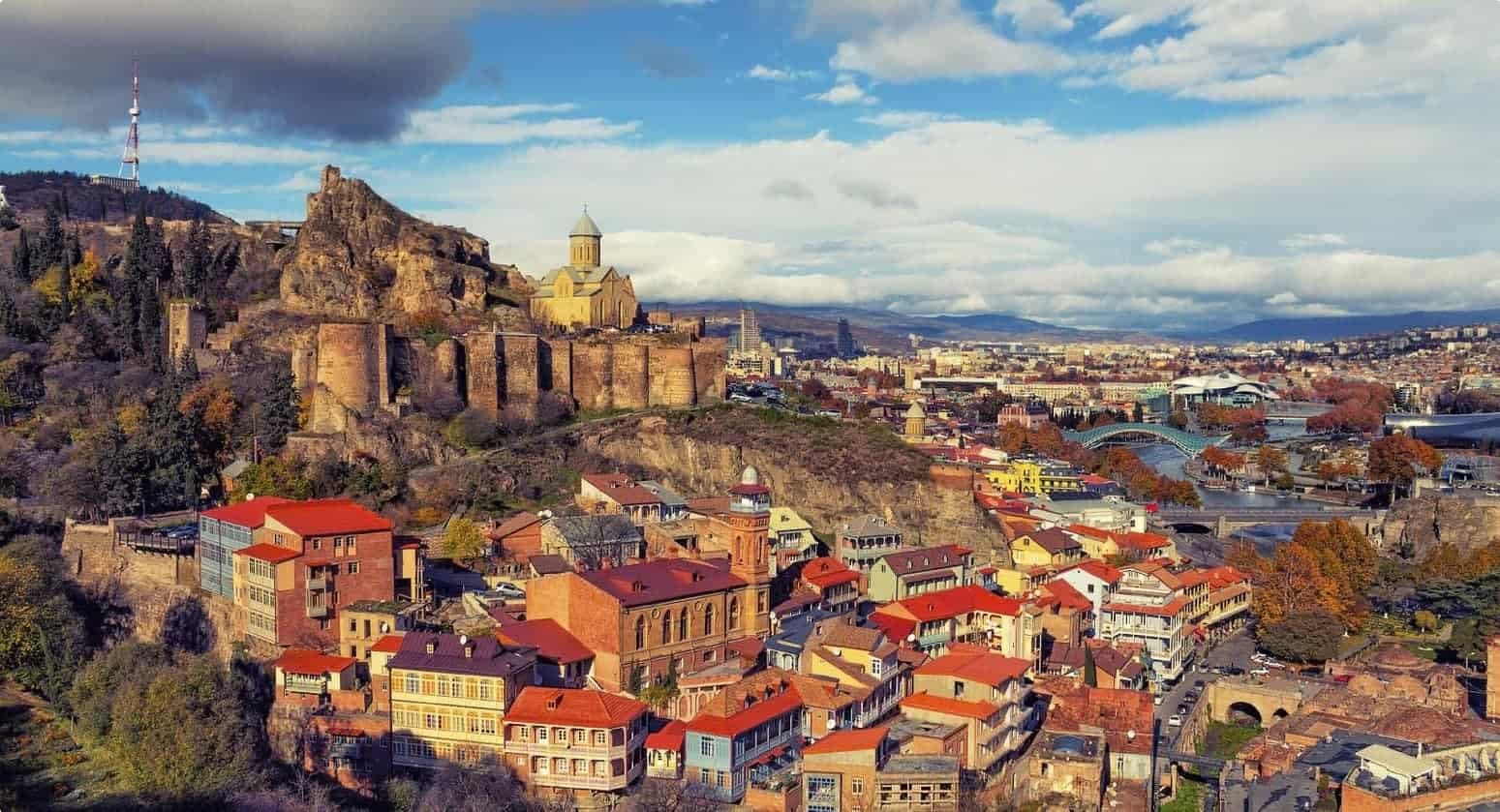

Related Tours
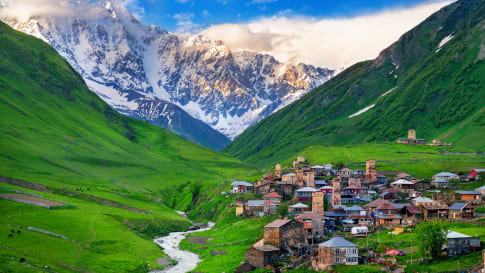
22 days
May, OctSmall Group Tour to the Caucasus | Armenia Azerbaijan Georgia
Visiting Armenia, Azerbaijan
This small group program is designed to give people an opportunity to explore Tbilisi, Baku, Yerevan as well as important monuments, historical and religious sites, diverse landscapes and ancient architecture by visiting the Caucasus Mountains and the lowlands of Armenia, Georgia and Azerbaijan. Led by local English speaking guides, there will be the opportunity to meet local people.
From A$11,835 AUD
View Tour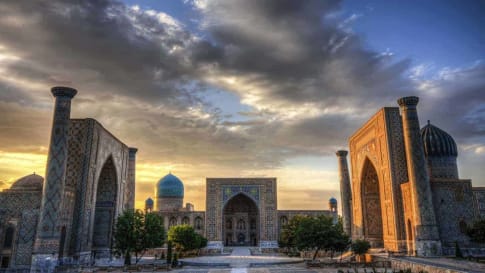
29 days
Aug, May, SepTravel on the Silk Road with Odyssey Traveller | Small Group Tour for Seniors
Visiting China, Kyrgyzstan
The Silk Road is an ancient trade route linking China and Imperial Rome through Central Asia. Few areas in the world remain as unexplored or offer such richness in terms of ancient and modern history, culture, and scenic diversity as Central Asia. Our Small group Silk road tours itinerary explores the Road through remote deserts and mountainous environments as we visit key sites between Xi'an and Bukhara.
From A$18,750 AUD
View Tour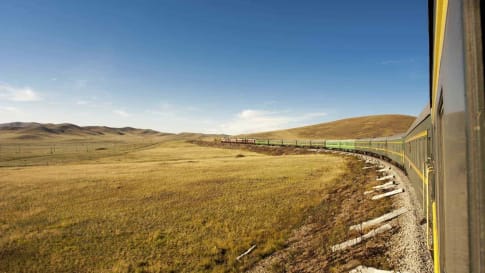
days
JulJourney through Mongolia and Russia small group tour
Visiting Mongolia, Russia
This escorted small group tour traverses this expanse, from Ulaanbaatar to St Petersburg; from the Mongolian Steppes to Siberian taiga and tundra; over the Ural Mountains that divide Asia and Europe to the waterways of Golden Ring. Our program for couples and solo travellers uses two of the great rail journeys of the world; the Trans Mongolian Express and the Trans Siberian Express.
From A$17,850 AUD
View TourArticles

Among the Mountains: A Guide to the Nations of the Caucasus
Article that introduces the Caucasus to the mature and senior traveller with a small group tour to Armenia, Georgia and Azerbaijan. The influence of Iran and the Ottomans as well as early Christianity are seen with this escorted group for couples and solo travellers.

History and legend in the landscapes of Georgia
Georgia, part of the Soviet empire, but its history is far more central to the birth of Christianity than a few decades of Soviet rule. This small group tour of the Caucasus explores Armenia and Azerbaijan as well as Georgia to set the historical framework for this region. The tour is suited for mature and senior travellers travelling as a couple or as a solo traveller.

Discovering Georgia: The Definitive Guide for Travellers
Learn before visiting Georgia on a small group escorted tour for mature and senior travellers as a couple or solo about the key places to visit. Understand the influence of the Christianity from Armenia, Islam and its mosques and the Ottoman empire influences, all of which are pre Soviet.
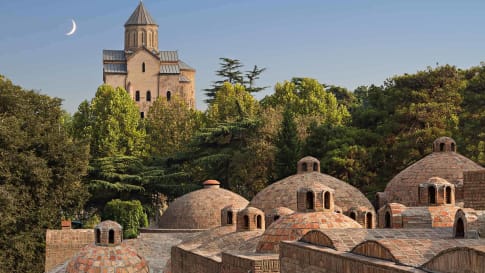
Tbilisi, Georgia
Explore and learn about Tbilisi, the capital of Georgia on a small group tour of the Caucasus for mature and senior travellers couples and solo travellers. A city with with plenty of history from the Romans to the Ottoman empire. Understand how the physical boundary of the Caucasus mountains repelled invaders and shaped the culture.
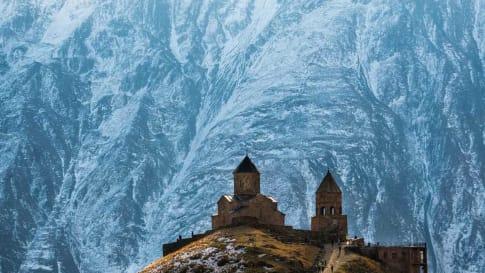
Visiting Armenia, Azerbaijan, Georgia
Learn about the physical role the Caucasus mountains have played in shaping the history of the region. Join a small group tour for mature and senior travellers couples and solo travellers to explore and understand the fascinating and intertwined history of Armenia, Georgia and Azerbaijan including the origins of Christianity. in amongst the mosques of Islam.
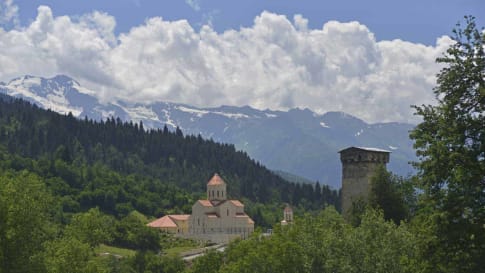
Clothes began in Georgia | History of clothing
For small group tour of mature and senior travellers touring Europe, this article provides an insight into the origin of textiles and fabric from Georgia in the Caucasus, to the Roman Empire and Southern Italy and Rome through to the industrial revolution of Britain.



